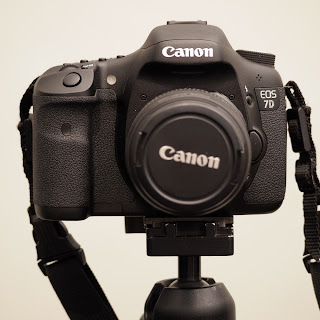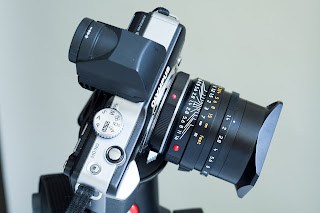So much cooler than mulch.
I had several meetings downtown today and while I was walking between them I came across some interesting landscaping. Instead of the usual crushed granite or cedar mulch this particular condo project used color glass in their garden beds. It looked very cool. I whipped the Sony Nex 7 up to my eye and shot a few frames to share. When I got back home and looked at the files I realized just how much detail there is a nice, 24 meg file. A lot. I've been using the 7 as my walking around camera for several weeks now and I've yet to find a real downside to the machine. I even like the kit lens. I think I am the only Sony owner who does.
Oh Deer.
Ben's cross country team is practicing earlier this week. He has to be at Barton Springs Pool by 6:30 am and since I am his permanently dedicated driver I also had to be there at 6:30. After I dropped him off I came back home to grab a towel for swim practice. My workout at the pool, half way between the house and Barton Springs, doesn't get started until 7 am. When I came back out of the house my front yard was full of deer. Again. Since I had my camera around my neck I pulled it up to my eye and shot a few frames. If we go back into recession it's good to know that we've got a convenient source of protein just outside the front door. Last week there were nine in the front yard.
A relic of yesteryear. Katz's Deli and Momo's.
On my way back from my last meeting to my car I walked by the old Katz's Deli building. For about 20 years Marc Katz ran a 24 hour deli/restaurant that was a "one of a kind" in Austin. Right on West Sixth St. He also had a night club upstairs. The yellow taxi was a defacto sign. The whole operation was a victim of the recession. 7 and the kit lens. Nice "Sony" color.
I want a truck like this...
I think it would be kinda cool to take photography and video back to their blue collar roots and have an old truck like this one that we drive around from assignment to assignment. I'd have shelves with gear on one side and a work station with a laptop and a big monitor on the other. We drive into the parking lot at some giant, international client's headquarters, load up a cart and go in to shoot headshots or products. Then we'd come back out and put the gear in the truck. I'd sit at the workstation and work on the files and we'd deliver them before we left the parking lot. Kind of like an electrician or a plumber. And we'd get paid like electricians and plumbers as well, big bucks, on the barrelhead. Of course we'd take credit cards, and checks, and cash. I wonder if the tacos are any good...
Finally, someone is wrapping the busses. It's about time.
For decades the buses in Austin have been boring white. No ads, no fun treatments. Now, at least we have some color and pizzazz. Of course, this being Texas, the bus is still 95% empty but now you really can't tell because the wraps make it harder to look inside. I would ride the bus but it's about twice as quick to ride a bike from my place. A governmental official once did the math and calculated that if we took the budget for the Metropolitan Transit Authority we could buy every bus rider a brand new SUV and all the gas they'd ever need. Interesting math. We're about five years from choking to death on downtown traffic but that's what it will eventually take to get Texans and Austinites to come to grips with the need for good public transportation. The Europeans coming for the Formula One (corporate welfare/giveaway) race in November will be shocked when they discover that they'll need a rental car or taxi to go anywhere. Especially to the big race. The above image is a quick snap shot from the 7.
A "daring" take on a cheese Kolache.
I did not have my beta iPhone 5 with me this morning so I shot my pastry with my Nex 7. What a meaningless shot. But it reminds me how good a cheese kolache is when paired with a covering of tiny chocolate bits. The Nex 7 kit lens focuses surprisingly close. I got this one at Whole Food so it must be healthy and organic. Not quite vegan.
I know this is a crappy post but it's been a long day with lots of time spent doing post production of food images at the computer. I retouched 48 images today. That's a lot. I worked on creating "good head" for beers, nice ice cubes for mixed drinks, real, red tomatos for burgers, sharp and fresh looking sushi and augmented juicy-ness for a one pound pork shank. And I finished them all off with a quick trip through the structure feature in SnapSeed. Yes. I'll try to do better tomorrow....
Refunds will be going out soon...












































